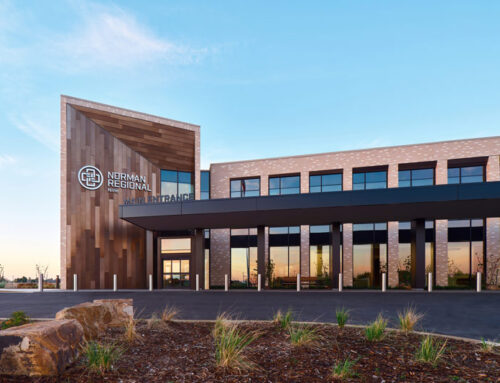Healthcare real estate is a fast-paced dynamic world; a strong real estate portfolio is critical in empowering systems and physician groups to achieve the “Holy Trinity” of healthcare. Quality of care, convenience, and cost-effectiveness. Outdated spaces, on the other hand, are a drain on all three, and operational and profitability challenges impact your ability to deliver the exceptional standard of care to which you hold yourself. When investigating opportunities, it is essential to ask some tough questions and dig deep into your current assets, as well as your future goals.
Here are five healthcare real estate questions (and a bonus “big” question!) to ask as you start the process:
-
Do our existing real estate assets provide our community with a top-rated healthcare experience?
Healthcare providers and systems need to take an unflinching look at their existing portfolio. Is it meeting their needs? More importantly, is it meeting the needs of those they serve? If not, dig deeper: Why? What’s wrong, and how can we fix it?
There are a number of red flags that indicate a portfolio is not conducive to providing the level of care, convenience, and cost-effectiveness that providers/health systems and consumers deserve, including aging facilities and infrastructure. Providers/systems may also notice a marked decrease in volume as patients seek care elsewhere or shifting demographic changes.
Now is the time to scrutinize your current real estate assets — and make changes that will positively impact patient care, outcomes, and, of course, financial stability and growth potential.
-
Can we reposition Main and Main retail opportunities to better serve the community?
With increasingly busy schedules and complicated lives, the ability to pop out for an appointment with your primary care physician or swing into an urgent care facility after work is increasingly attractive to community members. In fact, according to an NRC Health survey, an astonishing 80% of patients would switch providers for “convenience factors.” Proximity to their jobs, homes, and shops/services that they frequent is vitally important.
This has given rise to a strong, stable “medtail” trend as healthcare moves away from traditional hospital campuses and onto Main Street. While not an optimal solution for all, it is worth asking: Can we leverage retail space to expand your ambulatory care strategy? Is there an opportunity to create services that are more conveniently located to the overall community?
-
What if there is a resurgence of COVID or another pandemic?
Finally… finally, we are making inroads in the fight against COVID-19. But believing it is over is wishful thinking. You need to ask yourself: Do we have flexible space in place to ensure we can deliver care properly if we see a resurgence of COVID or another pandemic comes in on its heels? If so, can it accommodate both in-person care and telehealth models so we can best serve our community?
(Note: Telehealth is not supplanting “traditional” in-person offices, clinics, etc. Instead, it is acting as a compliment to care and has its own set of requirements in terms of space and facilities. These need to be taken into account as you review your real estate portfolios.)
-
Are there opportunities to monetize non-strategic ambulatory real estate assets within our portfolio?
Take the time to ask a relatively simple question: What do we have? And do we really need it? Are they in the right location for today’s community?
Put another way: Do we have any low-hanging fruit (i.e. non-strategic ambulatory real estate assets) that we don’t necessarily need to own? Can we monetize that, create value, and use the proceeds for a higher and better use? Or can we use those proceeds elsewhere to expand our ability to care for patients?
-
Should we repurpose space or develop from the ground up? And how do we pay for it?
First, repurposing vs. building from the ground up. What do you need from the property, and what type of care do you deliver? For example, hospitals and providers with any kind of acuity and highly specialized offerings will most often opt to develop properties because their needs are so targeted. It is exorbitantly expensive to redevelop or repurpose existing space for these types of uses.
On the other hand, a general practitioner, physical therapist, dermatologist, or other provider who delivers ambulatory care may well find that repurposing an existing space — whether an office in a medical arts building or a retail location downtown — allows them to meet their strategic goals and the needs of their community.
The logical follow up is: How do we pay for this? Should we utilize our own capital or leverage aggressive outside capital or liquidity?
There are pros and cons on both sides, and it is important to examine them in depth. The Bremner Real Estate team can help you analyze your situation, needs, and goals and find the best path towards cost-effectiveness, revenue, and, of course, exceptional care.
The Big Question: Can our internal real estate team handle this?
Healthcare real estate projects are juggernauts; there are myriad complexities with which to contend. Now it’s time to ask yet more questions:
- Do we have the capability to self-perform in the marketplace, or do we need to bring in experts to do that on our behalf?
- Do we have the money to fund projects? If so, do we want to use it in this way?
- Do we feel confident navigating these processes internally?
- What is our portfolio missing? What do I need to do that others are doing?
The first step in going down any path in a new project is asking preliminary questions, reviewing your portfolio internally, and reaching out to Bremner Real Estate. We will discuss options and approaches that meet your needs and will drive you towards your goals. Bremner’s client-focused approach maximizes benefits and ensures seamless projects that deliver best-in-class assets.
Providing outstanding patient care is your mission; ours is to ensure that you have the real estate assets behind you to deliver. Connect with us today to learn more.





